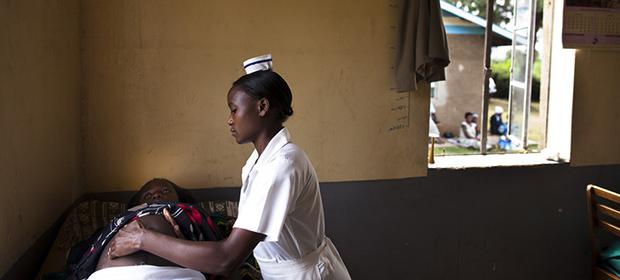Where We Work
See our interactive map


Most countries around the world celebrate May 1 as Labor Day, or International Workers’ Day, a holiday that goes back as far as 1886. Today the workers I’m thinking about are health workers—many of whom are at work despite the national holidays. These are the women and men who often make the difference between life and death, between a woman dying in labor and reaching a midwife prepared to help, between someone who lives with HIV having consistent access to meds and slipping into full-blown AIDS. And as the world prepares to better address noncommunicable diseases such as cancer and heart disease in low-income countries, health workers who are prepared for this challenge will continue to be the difference between communities that thrive and those that falter.
An Ambitious Vision for Health Care
Our global agenda for human resources for health is ambitious, and for good reason. The global health workforce shortage has prevented us from achieving our Millennium Development Goals for health in many countries. In fact, of the 75 Countdown countries—where more than 95% of all maternal and child deaths occur—only 31% are on track to attain Millennium Development Goal 4 by 2015, and 12% to attain Millennium Development Goal 5. In the post-2015 international development era—which will likely highlight such issues as poverty, economic development, education, gender, and climate change—we need to start with a stronger commitment to human resources for health. Why? First, because health workers save lives and improve health. Second, because building a robust health workforce contributes to economic development, both by improving the health of the working population and by creating good jobs in decent, safe workplaces. But a robust health workforce both contributes to and requires a well-functioning health system, and the issues are complex. Supply and demand must be in balance. The right number of health workers must be educated and entering the health workforce continuously. And it’s not just numbers. We must also maximize efficiency, productivity, and performance in the workplace, and an appropriate regulatory framework for education and practice must be in place. Done right, human resources for health is also a gender equality initiative, including education for girls so they have the opportunity to enter health careers and eliminating gender bias, discrimination, and violence in the health workforce. And health workers who are present, prepared, and backed by a strong health system are essential to disaster relief associated with conflict, natural disasters, and climate change. At last year’s Third Global Forum on Human Resources for Health in Recife, Brazil, countries from around the world announced their commitments to building stronger health systems. And IntraHealth International made a commitment of its own.
So as we celebrate Labor Day around the world, think about the health workers who labor for our global health and well-being every day, and about how they fit into the post-2015 global agenda.
Here are a few resources that inspire me. Be sure to check them out:
Get the latest updates from the blog and eNews




